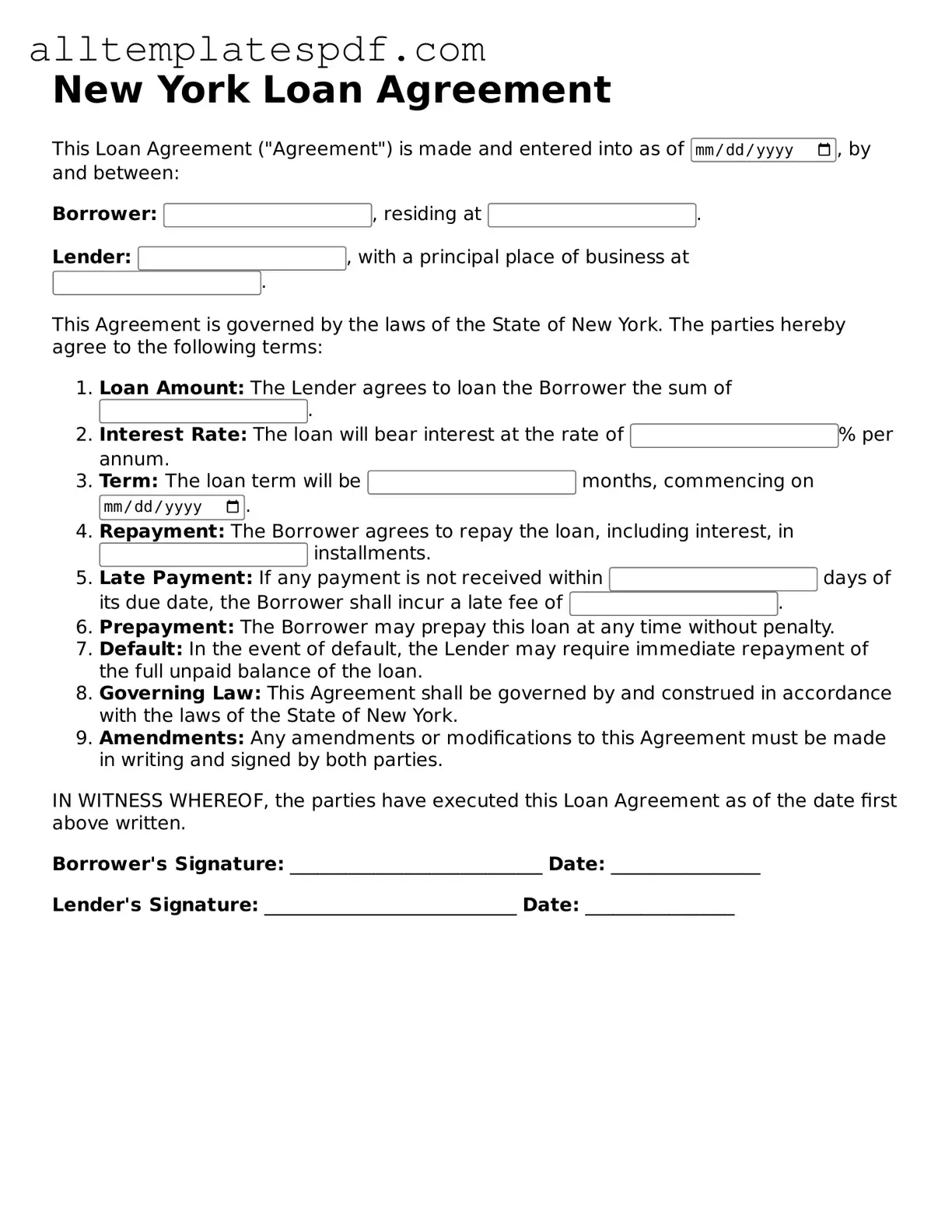Completing a New York Loan Agreement form requires careful attention to detail. One common mistake is failing to provide accurate personal information. Borrowers often overlook the importance of entering their full legal name, current address, and Social Security number correctly. Inaccuracies can lead to delays in processing or even denial of the loan.
Another frequent error involves the loan amount. Individuals sometimes miscalculate the desired loan amount or neglect to specify it altogether. This omission can create confusion for lenders, as they need this information to assess the borrower's needs and eligibility.
In addition, many people forget to include the purpose of the loan. Lenders typically require this information to evaluate the risk associated with the loan. Without a clear explanation, the application may be deemed incomplete, leading to further complications.
Many borrowers also fail to read the terms and conditions thoroughly. Ignoring the fine print can result in misunderstandings about interest rates, repayment schedules, and fees. A lack of clarity on these terms can lead to financial strain later on.
Another mistake involves not providing the necessary documentation. Lenders often require proof of income, credit history, or other financial documents. Omitting these can delay the approval process or even result in rejection.
Some applicants neglect to sign the agreement. A missing signature renders the document invalid, which can lead to the entire application being dismissed. It is crucial to ensure that all required signatures are present before submission.
Additionally, individuals might overlook the importance of reviewing the completed form for errors. Typos or incorrect figures can compromise the integrity of the application. A thorough review can catch these mistakes before they cause issues.
Not disclosing existing debts is another pitfall. Lenders need a complete picture of the borrower's financial situation. Failing to disclose current obligations can lead to a lack of trust and potential rejection.
Finally, many borrowers underestimate the importance of following up after submission. A lack of communication can lead to uncertainty regarding the application status. Staying in touch with the lender can facilitate a smoother process and clarify any outstanding issues.
